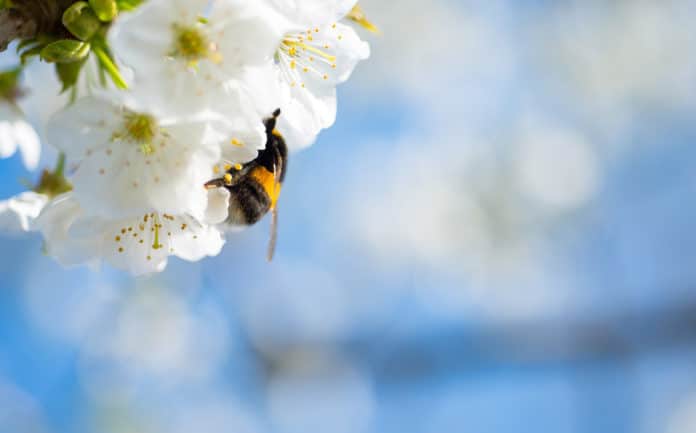Floral humidity, a region of elevated humidity in the flower headspace, occurs in many plant species and may add to their multimodal floral displays.
Along with bright colors and subtle scents, flowers use their floral humidity to attract pollinators. A new study by the University of Bristol has suggested that bumblebees may use the humidity of a flower to tell them about the presence of nectar.
To test whether other more widespread generalist pollinators can use floral humidity, scientists designed artificial flowers that presented biologically relevant humidity levels similar to flowering plants. They found that bumblebees showed a spontaneous preference for flowers which produced higher floral humidity.
Scientists ensured that the artificial flowers mimicked the humidity patterns seen in real flowers. They did so by developing and placing a robotic sensor that can measure the shape of the humidity patterning.
Scientists noticed that bees could be trained to differentiate between two types of artificial flowers with different humidity levels.
Dr. Michael Harrap carried out the research while based at the University of Bristol’s School of Biological Sciences and is the lead author of the study. He said: “We know that different species of plants produce flowers that have distinct patterns of humidity, which differ from the surrounding air. Knowing that bees might use these patterns to help them find food shows that flowers have evolved a huge variety of different ways of attracting pollinators, that make use of all the pollinators’ senses.”
Professor Natalie Hempel de Ibarra, Associate Professor at the University of Exeter’s School of Psychology, explained: “Our study shows that bumblebees not only use this sensory information to make choices about how they behave but are also capable of learning to distinguish between humidity patterns in a similar way to how they learn to recognize the color or smell of a flower.”
Dr. Sean Rands, Senior Lecturer in the University of Bristol’s School of Biological Sciences, added: “If humidity patterns are important for attracting pollinators, they are likely to be one of several different signals (such as color, scent and pattern) that a flower is using at the same time, and could help the bee to identify and handle the flower more efficiently.”
“The effectiveness of humidity patterns may depend upon the humidity of the environment around the flower; climate change may affect this environmental humidity, which in turn could have a negative effect on a visiting bee because the effectiveness of the humidity pattern will be altered.”
Journal Reference:
- Michael J. M. Harrap, Natalie Hempel de Ibarra et al. Bumblebees can detect floral humidity. DOI: 10.1242/jeb.240861
